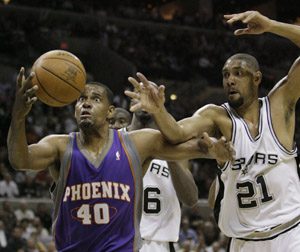Posted on
December 07, 2018 by
Jessica Peters
 Getting your children interested in sports is one of the most important things you can do for them, for a number of reasons. A child who is interested in sport is more likely to participate in it themselves, and this can help them keep fit and healthy. Children who exercise and participate in sports regularly are much more likely to do the same in adulthood, so it can bring lifelong benefits. Sports also teach us the important social skills of sportsmanship and being a team player, so here are four simple ways that encourage your kids to develop these vital attributes.
Getting your children interested in sports is one of the most important things you can do for them, for a number of reasons. A child who is interested in sport is more likely to participate in it themselves, and this can help them keep fit and healthy. Children who exercise and participate in sports regularly are much more likely to do the same in adulthood, so it can bring lifelong benefits. Sports also teach us the important social skills of sportsmanship and being a team player, so here are four simple ways that encourage your kids to develop these vital attributes.
Watch Lots of Sport
Watching a sport is great fun, and your children will enjoy it even more if they can do it with their mom or dad and if they have a particular team they can cheer on. People of all ages can learn a lot from watching sport, but one of the most important lessons is that working smoothly with people as part of a team can bring great results. Even Steph Curry, for example, knows when it’s best to pass to a Warriors teammate rather than taking a shot on himself. This can be a vital lesson for young people to learn, encouraging them to think about ‘we’ rather than just ‘me’.
Learn to Trade and Share
Loving sport can give a child many happy memories that stay forever, but it’s not simply watching the sport, or even taking part in it, that’s fun. There are lots of family friendly activities that are spin offs from sport, and one of the most enjoyable is trading pin collecting. A team pin can be a thing of real beauty, and many children and adults love to wear the pin of the team they support, whether that be in football, baseball, hockey, basketball or soccer. Many children also trade club pins with school friends or at special trading events. These not only allow your child to grow their collection, it means that they learn how to trade fairly, and how sharing can bring rewards. Read the rest of this entry →
Tags: sportsmanshipYouth Sports
Category
Health & Fitness, Outdoor Activities
Posted on
December 05, 2018 by
Sasa Cvetkovic
 Anyone who has ever played basketball has dreamed about leaping past and over a defender and performing a slamdunk in the best tradition of Horace Grant and Michael Jordan. Unfortunately, for most of us this seems like an impossibility. But your inability to do this likely has less to do with your technique than it does with your ability to perform a vertical leap. That’s the purpose of this article: to help you increase your vertical jump.
Anyone who has ever played basketball has dreamed about leaping past and over a defender and performing a slamdunk in the best tradition of Horace Grant and Michael Jordan. Unfortunately, for most of us this seems like an impossibility. But your inability to do this likely has less to do with your technique than it does with your ability to perform a vertical leap. That’s the purpose of this article: to help you increase your vertical jump.
It’s important to keep in mind that improving your vertical leap means making better use of your leg muscles. So if you’re going to do this, your training needs to emphasize vertical movements, such as deadlifts, Olympic lifts and squats.
When combined with a solid understanding of basketball fundamentals, and increased vertical jump can give you a real advantage on the court. Keep the following in mind if you want to achieve maximum height when you leap for the slamdunk.
1. Get Rid of Those Knots in Your Legs
Muscle knots exist throughout your body and make your muscles weaker and shorter by stripping the length of muscle tissue. Slowly run a foam roller across your muscles, focusing on sensitive spots in order to release the knots there. You should work on the following areas of your legs, devoting roughly a minute to each leg.
Calf Muscles – Position the roller below your calf while resting the opposite foot flat on the floor. Alternatively, you could cross this leg over your shin in order to increase pressure. Then roll up from the ankle to the knee. Repeat with the opposite leg.
Quadriceps – Lie flat on your stomach and placed the roller underneath the front of the thigh. Then roll it up and down from the knee to the bottom of the hip. Then switch to the other leg and repeat.
IT Band – Lie on one side with the roller position close to your hip while resting the foot of the other leg. Then roll the roller up and down along the outer thigh. You can choose to enhance the pressure by positioning one lying on top of the other. Then repeat this process with the opposite leg.
2. Hip Flexor Stretch
If you’re going to successfully increase your vertical jump, it’s essential for you to be able to extend your legs much more quickly. One way you can practice doing this and enhance your ability is to do hip stretches. Doing a hip flex or stretch means you are pulling your knee up and loosening the muscles involved. This will help to ensure that your muscles won’t be tight and prevent you from increasing your vertical jump.
In the hip flexor stretch, place your back knee right below your hip and lunge forward, pushing with your pelvis unto you begin feeling the stretch at the point where your femur meets your pelvis. Hold this position for about 2 seconds and then release. You should repeat this 10 times for each leg. Read the rest of this entry →
Tags: Basketball
Category
Basketball, Health & Fitness, Sports Fitness
Posted on
November 09, 2018 by
John Harris
We all know well the benefits and advantages of taking up a new sport. Not only does engaging in some kind of sport help keep your fitness in check, but it can also be a great way to ensure that you are socially healthy too. Actually, sports can be a particularly good way of ensuring that you are spending time with others, and this is something that is worth bearing in mind if you are wondering whether or not you should do so yourself. If you do want to get into a new sport, and you are not entirely sure where to begin, it might help to take a read of what’s below. In this article, we have put together some of the best advice on getting into a new sport, so that you can hopefully find it much easier to do so. As long as you have considered the following, you might find yourself getting started in a new sport before too long, and enjoying the numerous benefits that come along with that.

Deciding on Your Sport
Probably a good first step here is to make sure that you are aware of what sport you would most like to get into. There are so many sports out there which are played every day that you can’t even count them, so you know that you are not going to run out of ideas here. In fact, you might find that you have the opposite problem, and you actually struggle to narrow it down to a few sports you might like to try. Nonetheless, that is a good way of going about it, and it’s worth trying to find a way to bring your list of potential sports down to just one or two that seem worthwhile and interesting to you.
It can often be the case that a particular life situation means that you are going to lean more to one or two particular sports. For instance, it might be that your local neighborhood has a baseball team and not much else, in which case you might choose to go for that. Or you might be tall, and consider you have good chance in the world of basketball. But in general, assuming you have a number of sports to choose from, it should mostly be about what you genuinely think you would enjoy most of all. Read the rest of this entry →
Category
Health & Fitness, Outdoor Activities, Sports equipment, Sports Fitness
Posted on
October 27, 2018 by
Joe Fleming
 When most people think of elbow injuries, they think of overuse injuries like tennis elbow or golfer’s elbow. Overuse injuries like these are common, but so are acute elbow injuries like an elbow hyperextension.
When most people think of elbow injuries, they think of overuse injuries like tennis elbow or golfer’s elbow. Overuse injuries like these are common, but so are acute elbow injuries like an elbow hyperextension.
Many professional athletes have suffered from hyperextended elbows during their careers, including former Phoenix Suns center Kurt Thomas, former Florida Gators running back Jeff Demps, and current free agent wide receiver Malcolm Mitchell.
Whether you’re a budding professional athlete or someone who enjoys the occasional recreational game, it’s important to understand elbow hyperextension. It’s especially important if your sport of choice is basketball, football, or boxing.
Read on to learn about the most common causes of this injury, along with tips on how to prevent and treat it.
What is Elbow Hyperextension?
Elbow hyperextension is an injury that occurs when the elbow is bent backward and moves beyond its normal range of motion. When the elbow is beyond its normal range, people typically experience the following symptoms:
-
A popping sound
-
Immediate pain
-
Pain when touching or moving the elbow
-
Swelling at or around the elbow
-
Redness at the elbow
-
Joint stiffness
-
Muscle spasms
-
Loss of strength in the affected arm
-
Loss of joint mobility
Sometimes, people with elbow hyperextensions also experience elbow dislocations. In severe cases, people with a hyperextended elbow may also experience elbow deformities or a reduction in circulation in the affected arm.
Some research also shows that repetitive hyperextension injuries can cause some pathological changes to the bones and soft tissues of the elbow joint. Read the rest of this entry →
Tags: Elbow injuriesSports Injuries
Category
Basketball, Health & Fitness, Sports Fitness, Sports Medicine
Posted on
October 17, 2018 by
Joe Fleming
 As far as sports injuries go, one of the most common is the rotator cuff tear.
As far as sports injuries go, one of the most common is the rotator cuff tear.
Rotator cuff tears can affect any athlete, especially at the competitive or professional level. For example, both Jets wide receiver Eric Decker and former Los Angeles Lakers shooting guard Kobe Bryant have dealt with rotator cuff injuries during their careers.
Whether you’re a competitive athlete or just an average gym-goer, it’s important to take steps to protect your rotator cuff.
One of the best things you can do is to make sure you warm-up properly before every practice, game, or workout. Listed below are four essential exercises that will help you warm up and prevent rotator cuff tears.
Understanding the Rotator Cuff
Before getting into the specific exercises for the rotator cuff, it’s important to understand what the rotator cuff is and why it’s so susceptible to injury.
The rotator cuff is a group of four muscles that surround the shoulder joint. These muscles help stabilize the shoulder and prevent injuries.
Rotator cuff tears typically occur slowly over time and are the result of overuse. They’re especially common among weightlifters and other athletes who do a lot of repetitive overhand movements (throwing, reaching, swinging, etc.).
If you experience a rotator cuff tear, you likely won’t realize it right away. Over time, though, you may start experiencing the following symptoms:
-
Pain while at rest and while lowering or raising your arm
-
Weakness, especially when rotating or lifting your arm
-
A cracking sensation when you move your shoulder Read the rest of this entry →
Tags: Kobe BryantRotator cuffSports Injuries
Category
Health & Fitness, Sports Medicine
Posted on
October 06, 2018 by
Joe Fleming
 Of all the injuries that can affect runners, ankle injuries are one of the most common. Even professional runners like Olympians Usain Bolt and Paula Radcliffe have dealt with ankle injuries that negatively affected their careers.
Of all the injuries that can affect runners, ankle injuries are one of the most common. Even professional runners like Olympians Usain Bolt and Paula Radcliffe have dealt with ankle injuries that negatively affected their careers.
Whether you’re an Olympic hopeful or just someone who runs for fun, it’s crucial that you take steps to keep ankle injuries at bay. Not only can an injured ankle prevent you from running consistently, but it can also negatively affect your movement patterns and make other forms of exercise more difficult.
Read on to learn everything you need to know about preventing ankle injuries while running.
Common Ankle Injuries for Runners
The following ankle injuries are probably the most common ones that can affect runners:
Ankle Sprains
An ankle sprain occurs when the ligaments of the ankle are damaged or torn.
In runners, ankle sprains are often the result of a misstep when coming down from a curb, or from tripping over rocks or cracks in the road or sidewalk.
Often, sprains do not cause lasting damage, particularly if they’re mild and diagnosed early. They’re typically characterized by swelling and constant pain, even when you’re at rest.
Overuse Injuries
As their name suggests, overuse injuries are the result of overuse.
In runners, some common overuse injuries include posterior tibial tendonitis, which affects the back of the ankle, and peroneal tendonitis, which affects the inside of the ankle.
With overuse injuries, you’ll likely feel pain during activity, but not when you’re at rest.
Stress Fractures
Stress fractures are small cracks or severe bruising that affects the bone. Stress fractures can be brought on by an acute injury, like a fall, or by overuse. Runners are particularly prone to stress fractures in the ankles and the feet.
How to Prevent Ankle Injuries
In order to avoid these common ankle injuries, it’s important to take the precautionary measures. They’ll help you strengthen your ankles so that you’re more resilient. They can also correct improper movement patterns that increase your injury risk. Read the rest of this entry →
Tags: ankle injuriesrunners
Category
Health & Fitness, Running, Sports Fitness, Sports Medicine
 Getting your children interested in sports is one of the most important things you can do for them, for a number of reasons. A child who is interested in sport is more likely to participate in it themselves, and this can help them keep fit and healthy. Children who exercise and participate in sports regularly are much more likely to do the same in adulthood, so it can bring lifelong benefits. Sports also teach us the important social skills of sportsmanship and being a team player, so here are four simple ways that encourage your kids to develop these vital attributes.
Getting your children interested in sports is one of the most important things you can do for them, for a number of reasons. A child who is interested in sport is more likely to participate in it themselves, and this can help them keep fit and healthy. Children who exercise and participate in sports regularly are much more likely to do the same in adulthood, so it can bring lifelong benefits. Sports also teach us the important social skills of sportsmanship and being a team player, so here are four simple ways that encourage your kids to develop these vital attributes.



